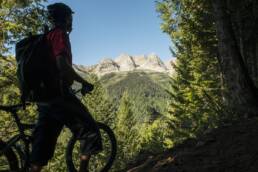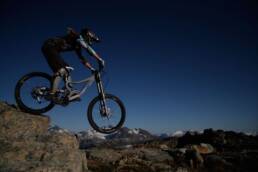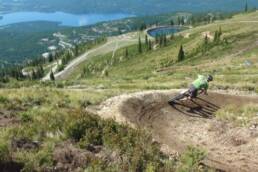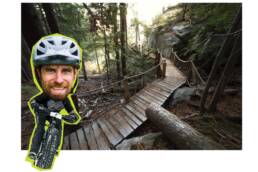Patrick Lucas is the founder of British Columbia’s Aboriginal Youth Mountain Bike Program. In this article he describes how mountain biking has impacted the Simpcw First Nation, the People of the Thompson River.
I’m straddling my bike atop a small ridge overlooking the Thompson River above the small hamlet of Chu Chua, British Columbia, the home of the Simpcw First Nation. A stream of riders on mountain bikes flow past me and down a narrow, hard-packed dirt trail that cuts through a forest of pine and birch like a ribbon of silk. This is Step it Up, a black diamond trail built by the Simpcw Nation crew, a venture created in collaboration with the Aboriginal Youth Mountain Bike Program (AYMBP).
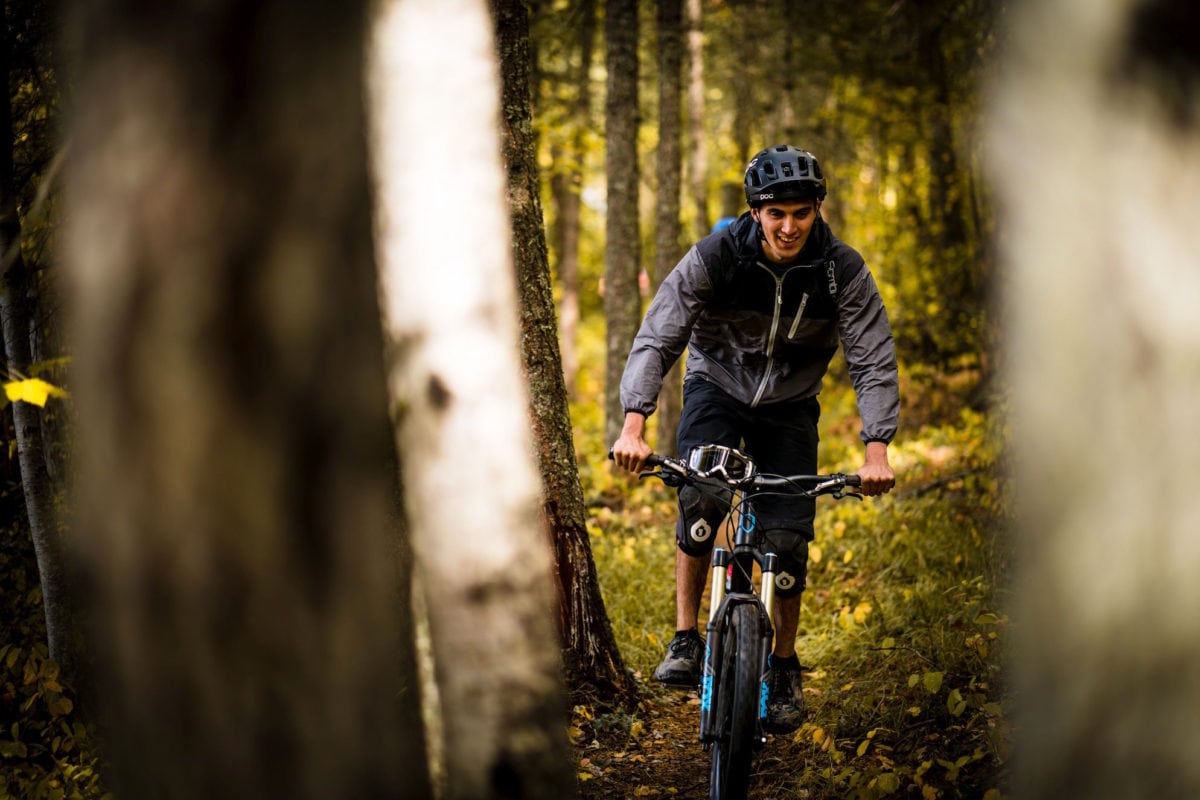
The Simpcw Nation, the People of the Thompson River, a Secwempcw community and self-declared Mountain Bike Nation, have lived on these lands for thousands of years. Their traditional territories, Simpcwul’ecw, encompass an area of five million hectares from the headwaters of the Athabasca River to McLure, just north of Kamloops. Several years ago the AYMBP were invited to the community to explore the possibilities of initiating a trails and mountain bike program in the community. Those early discussions launched a project that would result in the creation of the Simpcw Nation Trail Crew, the development of 15 kilometres of high-quality singletrack, and the establishment of the Nation as a world-class riding destination and model for trails and reconciliation.
Tom Eustache, a Simpcw member and father who taught his kids to ride, saw the opportunities for his community. He told us how the idea came to him when he was visiting trail networks in other communities. “We were riding bikes five or six years ago, that’s what got us into trail building, seeing trails everywhere else,” he says. “We figured, why don’t we building something right in our community?”
On the ridge above the community, Tom and his son Skylar, discovered some abandoned hiking trails and decided to rebuild and repurpose them for riding. It was at the beginning of this process that the AYMBP got involved. Fund raising assistance was provided and professional trail builders brought in to provide training, such as Mark Wood from the North Shore Mountain Bike Association and Thomas Schoen from the Cariboo Mountain Bike Consortium. For myself and Thomas Schoen, the directors of the AYMBP, we’ve been able to witness first-hand the positive impact these projects have on First Nation communities.
Thomas, the AYMBP Trails Specialist, says, “The impact of mountain biking, especially on smaller First Nation communities, is tremendous. We’ve been witnessing this for a number of years. I can honestly say it’s changing their communit[ies].” Tom Eustache views the trails as a critical asset to his community. “The trails are enough for our young kids to start out on and it’s accessible to the community.” This is evidenced by the significant number of youth who are out riding, as well as by a large group of women who have started a trail running club. Tom measures the success by how much he can see people are enjoying the trails. “We just heard some guys coming down the trail behind us, whooping and hollering. So that’s an indication to me that [the trails are] working.”
[foogallery id=”13196″]
Skylar, Tom’s son, started working on the trails with his father when he was fourteen years old and has grown up watching people riding his handiwork. He spoke to us of how it has impacted his own confidence. “It’s definitely a big confidence booster seeing everyone actually liking the trails and having fun. It’s one thing to build it and have fun yourself, but it’s another when other people say, ‘Yeah it’s fun. It’s a good time.’” Skylar has participated in the trail building workshops with AYMBP and developed a career for himself as a professional trail builder. Over the past few years he has worked as part of the trail crew at Sun Peaks as well as with First Journey Trails on major projects in Williams Lake and the Fraser Valley. Likewise, the Simpcw Trail Crew travels throughout their traditional territories, working on trail projects in Blue River and Clearwater, and taking their youth out riding and reconnecting with the land.
Riding with the Simpcw youth, I pause and listen as they yell and laugh, weaving their way down the trail with giant grins on their faces wider than their handlebars. The Simpcw people have always been known for their abilities as adept hunters and harvesters, sustainably managing fish, wildlife, plants, and medicines from their lands and territories. Now, they are also becoming known as leaders within the mountain bike world — serious shredders and master trail builders.
Related Stories
New Mountain Bike Trail at Island Lake Lodge Opens Today
After four years of construction, the Lazy Lizard Trail at Island Lake Lodge in Fernie, British Columbia, opens today.…
Honest Review: Flylow Shaw Mountain Biking Shirt
Editor Vince Hempsall takes the Flylow Shaw mountain biking shirt for a rip. This is his honest review. Flylow is an…



